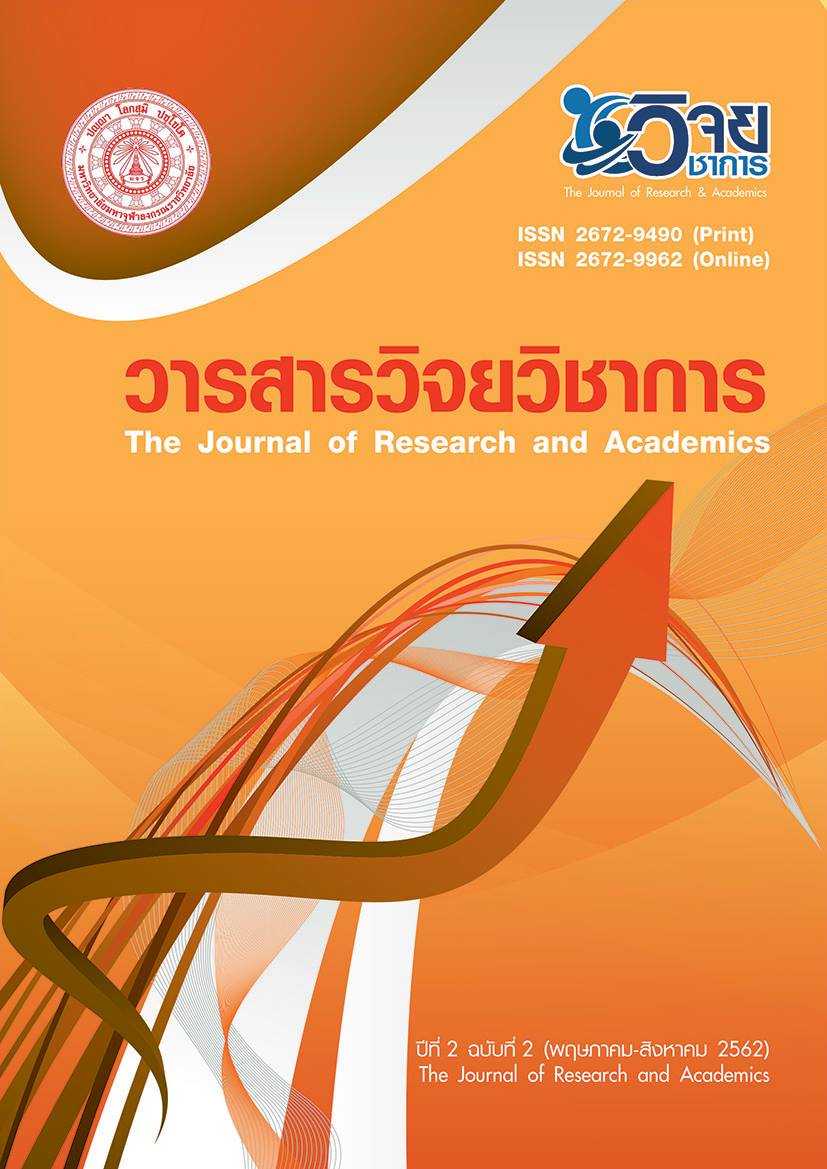Innovation and Administration
Main Article Content
Abstract
This research aims to In order to study Innovation and Administration, the results of this study revealed as follows: the Innovative organizations must have executives who are committed to innovation. To have a working atmosphere that supports innovation. Acceptance of mistakes or failures as a result of risk. Communication at the same level. To have a flexible organizational structure. Having a long-term perspective. The vision and strategy for developing the organization how to develop. Includes a talent management system and the chain of command divided by the functions of each party clearly. Innovation is therefore essential and necessary to be used in the development of people, organizations, and the advancement of the nation. Innovation takes place through the study of theories and practices.
Article Details
1. เนื้อหาและข้อมูลในบทความที่ลงพิมพ์กับวารสารวิจยวิชาการ ถือเป็นข้อคิดเห็น และความรับผิดชอบของผู้เขียนบทความโดยตรงซึ่งกองบรรณาธิการวารสารไม่จำเป็นต้องเห็นด้วย หรือร่วมรับผิดชอบใด ๆ
2. บทความ ข้อมูล เนื้อหา รูปภาพ ฯลฯ ที่ได้รับการตีพิมพ์ในวารสารวิจยวิชาการ ถือเป็นลิขสิทธิ์ของวารสารวิจยวิชาการ หากบุคคลหรือหน่วยงานใดต้องการนำทั้งหมดหรือส่วนหนึ่ง ส่วนใดไปเผยแพร่ต่อหรือเพื่อการกระทำการใด ๆ จะต้องได้รับอนุญาตเป็นลายลักษณ์อักษรจากวารสารวิจยวิชาการก่อนเท่านั้น
References
2. เศรษฐชัย ชัยสนิท. (2553). นวัตกรรมและเทคโนโลยี. เข้าถึงได้จาก http://it.east. spu.ac.th/ informatics/admin/knowledge/A307Innovation%/20and %20Technology.pdf.
3. สำนักงานนวัตกรรมแห่งชาติ. (2547). การจัดการนวัตกรรมสำหรับผู้บริหาร. กรุงเทพฯ: สำนักงานนวัตกรรมแห่งชาติ.
4. Adair, John E. (1996). Effective Innovation: How to Stay Ahead of the Competition. London: Pan Books.
5. Byrd. T. A. & Turner, D. E. (2001). An exploratory examination of the relationship between flexible IT infrastructure and Competitive advantage. Journal of Information and Management, 39(2).
6. Christiansen, James A. (2000). Building The Innovative Organization: Management Systems that Encourage Innovation. Hampshire: Macmillan Press.
7. Dobni, Brooke C. (2008). Measuring Innovation Culture in Organization the Development of a Generalized Innovation Culture Construct Using Exploratory Factor Analysis. European Journal of Innovation Management, 11(4).
8. Gundling, Ernest. (2000). The 3M Way to Innovation Balancing People and Profit. Ottawa: Kodansha International Ltd.
9. Guan, J. and Ma, N. (2003). Innovative Capability and Export Performance of Chinese Firms. Technovation, 23(1).
Hughes, Chuck. (2003). What does it really takes to get into the Ivy League & other highly selective colleges. New York: McGraw- Hill.
10. Price water house Coopers. (1999). Global Growth and Innovation Study, Executive Summary. London: Price waterhouse Coopers.
11. Schumpeter, Joseph A. (1961). The Theory of Economic Development. Cambridge: Harvard University Press.
12. Alvin, Tofler. (1980). The Third Wave. New York: William Marrow.

